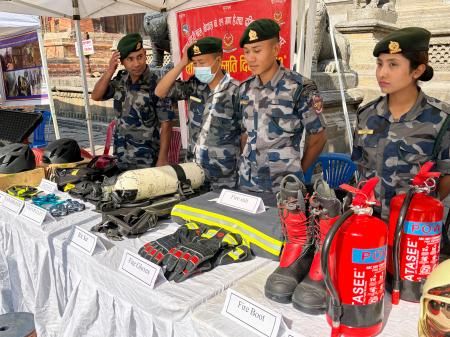Nepal Earthquake: Progress and Challenges Five Years On
The devastating 2015 Nepal earthquake, registering a magnitude of 7.8, left an indelible mark on the nation. Five years later, while significant progress has been made in recovery and reconstruction, numerous challenges persist. This article explores both the advancements and ongoing hurdles in Nepal's post-earthquake journey.
Progress Made: A Look at Recovery Efforts
The immediate aftermath of the earthquake saw an outpouring of international aid, crucial in providing emergency relief and initiating the long road to recovery. Significant progress has been made in several key areas:
Housing Reconstruction:
- Increased housing construction: A substantial number of homes have been rebuilt, particularly in rural areas, thanks to government initiatives and NGO support. The government's reconstruction program, while initially slow, has gained momentum.
- Improved building codes: The earthquake highlighted the need for stricter building codes, leading to significant improvements in construction practices designed to withstand future seismic activity. This is crucial for long-term resilience.
- Financial aid distribution: Though not without its challenges (discussed below), the distribution of financial assistance to earthquake survivors has enabled many families to rebuild their lives.
Infrastructure Development:
- School and hospital reconstruction: Many schools and hospitals destroyed in the earthquake have been rebuilt or renovated, improving access to vital services for communities.
- Road and bridge repair: Significant progress has been made in repairing damaged infrastructure, although some remote areas still face connectivity challenges. Improved infrastructure is vital for economic recovery.
- Heritage site restoration: The painstaking restoration of Nepal's invaluable cultural heritage sites, including UNESCO World Heritage sites, demonstrates the nation's commitment to preserving its history.
Challenges Remain: Obstacles to Full Recovery
Despite the progress, numerous challenges continue to hinder Nepal's complete recovery:
Ongoing Housing Needs:
- Delayed reconstruction: Many people are still living in temporary shelters, facing continued vulnerability and hardship. Bureaucratic hurdles and logistical difficulties have slowed the reconstruction process.
- Unequal distribution of aid: Disparities in aid distribution have left some communities significantly behind others, exacerbating existing inequalities.
- Land ownership issues: Complex land ownership issues have complicated the reconstruction process, delaying the rebuilding of homes for many.
Socio-Economic Impacts:
- Poverty and unemployment: The earthquake exacerbated existing poverty and unemployment issues, leading to significant economic hardship for many families.
- Trauma and mental health: The psychological impact of the earthquake remains substantial, with many people struggling with trauma and mental health issues. Access to mental health services remains limited.
- Vulnerability to future disasters: While progress has been made in building codes, Nepal remains vulnerable to future earthquakes and other natural disasters. Continued investment in disaster preparedness is essential.
Looking Ahead: A Path to Resilience
Nepal's journey to recovery from the 2015 earthquake is a testament to the resilience of its people. However, sustained effort and international cooperation are crucial to overcome the remaining challenges. Focusing on improved aid distribution mechanisms, addressing land ownership issues, and investing in long-term disaster preparedness will be key to building a more resilient and prosperous future for Nepal.
Keywords: Nepal earthquake, 2015 Nepal earthquake, Nepal earthquake recovery, Nepal earthquake reconstruction, Nepal earthquake challenges, Nepal earthquake progress, post-earthquake Nepal, Nepal disaster relief, building codes Nepal, Nepal infrastructure, Nepal housing, Nepal aid distribution
Call to Action: Learn more about organizations supporting Nepal's earthquake recovery and consider contributing to their efforts. You can find reputable organizations through a quick online search.
